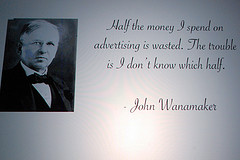 The word “relationship” is used a lot when describing how companies should approach social media marketing. You need to build relationships with your audience, relationships with your customers, and relationships with key players in your industry who might help promote your message. Relationship can be a tricky word to understand in a business sense, however, especially in a business context. What exactly does “build relationships” mean? We think perhaps social media marketing success may seem more accessible if we shift the verbiage a little. Instead of talking about building relationships, how can companies build credibility online? Our five tips today offer advice on how you can build your company’s online credibility.
The word “relationship” is used a lot when describing how companies should approach social media marketing. You need to build relationships with your audience, relationships with your customers, and relationships with key players in your industry who might help promote your message. Relationship can be a tricky word to understand in a business sense, however, especially in a business context. What exactly does “build relationships” mean? We think perhaps social media marketing success may seem more accessible if we shift the verbiage a little. Instead of talking about building relationships, how can companies build credibility online? Our five tips today offer advice on how you can build your company’s online credibility.
1. Be clear about who you are
This is especially necessary on Twitter. Are you tweeting as a company, as a representative of a company, or as an individual? Your avatar and your Twitter bio can go a long way towards clarifying your online identity for others. Once you make that decision, try to maintain a consistent tonality, particularly if you are tweeting on behalf of a company.
2. Do not share unvalidated information
This can be tricky when your desire is to share as much information as possible as quickly as possible. Margie wrote about the perils of sharing information too quickly on a post for Razoo. The problem is that information you share, along with however you introduce it, can spread to others in your network very quickly. If it is discovered that you shared incorrect data or information, your credibility can be called into question. This can be a hard blow from which to recover.
3. Do not share without checking what you are sharing
Getting hacked is a common problem in the online world. You don’t just need to worry about your accounts, although obviously that will be your top priority. You also need to make sure that trusted sources around you aren’t sending out bad links. Many times we can fall into patterns of simply sharing content from trusted accounts, but that can backfire badly, and it can impact your credibility in very serious ways.
4. “You might be wrong. Be humble.”
There is a picture that has been floating around on Pinterest with words to this effect. In an effort to build credibility, it can be tempting online to say things with certainty, or to indicate that if someone does not do things your way they are less intelligent. Leave yourself some wiggle room in case someone offers an alternative perspective or new information you may not have known when you made your initial comment.
5. Avoid drama
If you are using online tools for fun as an individual, engage in emo drama till the cows come home. However, if you are trying to build your company’s online credibility, it’s usually a good idea to try to avoid the drama that can spring up in the online world. Not only can drama bring out the most unattractive side of an individual’s personality, but if people see a corporate account engaging in drama, they may well wonder why that company isn’t busy actually doing real-world work. It can be a slippery slope, so as always our advice is, “If you aren’t sure, probably best to err on the side of caution.”
Building credibility online is a tricky thing, and usually there is not a clear way to measure how you are progressing on this path. It is important to follow your own compass, and of course if you are online to represent your company, make sure that everyone in your company is on board with talking points, company voice, and more.
Image credit: http://www.flickr.com/photos/vagawi/3155400274/ via Creative Commons








